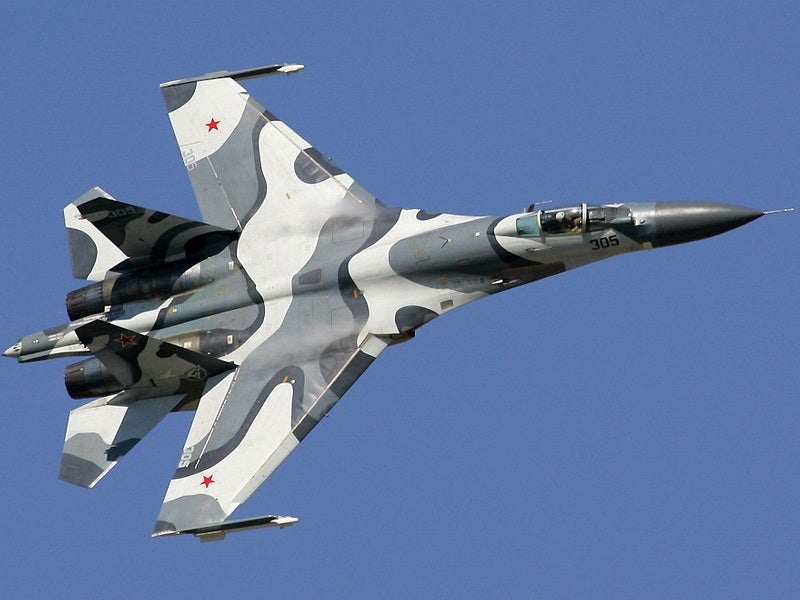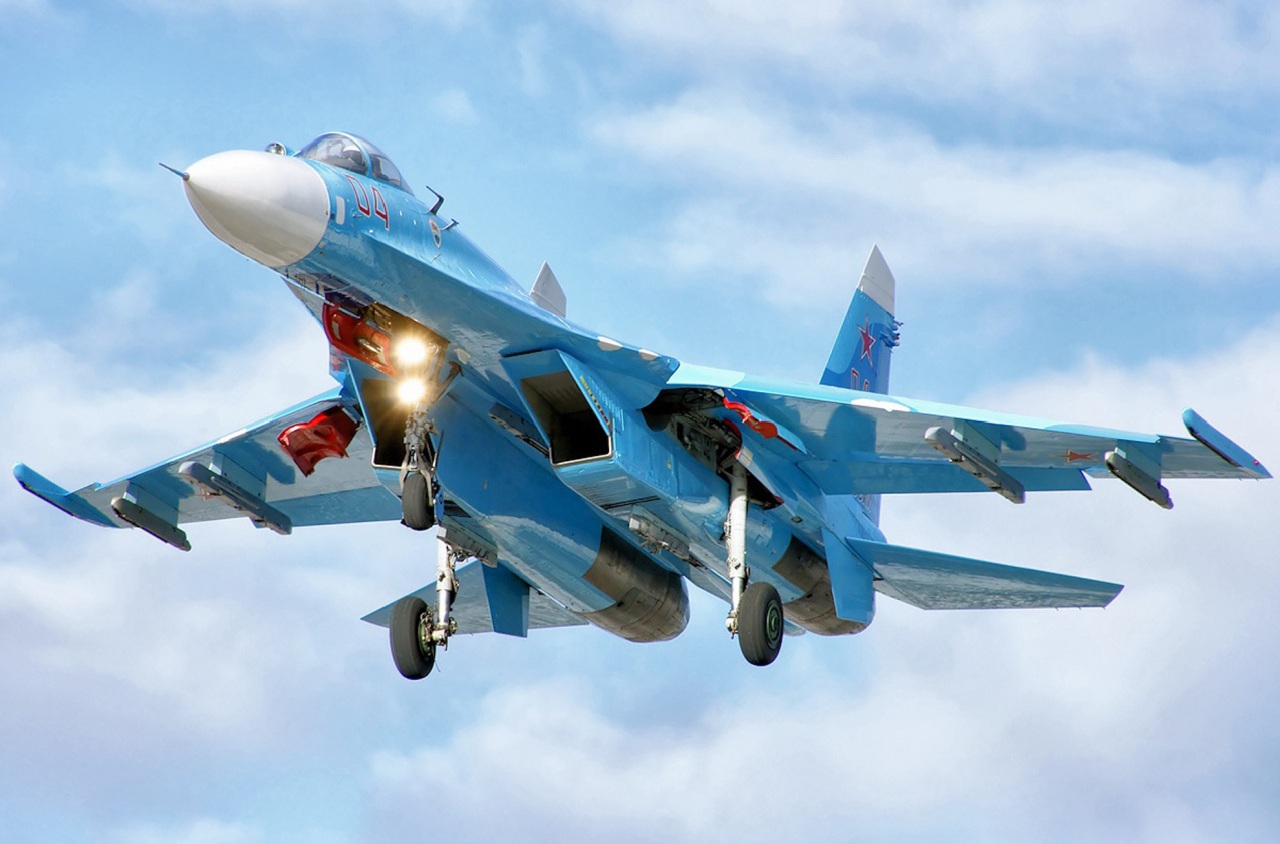

Su-27, codenamed by Nato as Flanker, is a twin-engine, highly manoeuvrable fighter aircraft that provides air superiority.
It was designed by Sukhoi Design Bureau and manufactured by Irkut. The export version of the aircraft is known as the Su-27SK.
The aircraft is equipped to operate autonomously in combat over hostile territory, in escort of deep-penetration strike aircraft and in the suppression of enemy airfields. The aircraft provides general air defence in cooperation with ground-based and airborne control stations. The Su-30M Flanker, Su-33, and Su-35 are all advanced versions of the Su-27 fighter aircraft.
Su-27 Flanker development
The Su-27 entered production in 1982 and is in service with Russia, Ukraine, Belarus, Kazakhstan, Indonesia, Uzbekistan and Vietnam, and is built under licence in China as the F-11. A variant, the Su-30MK, was sold to India with licensed local production.
A total of 50 aircraft were ordered from Irkut and the first entered service with the Indian Air Force in September 2002. The last was delivered in December 2004.
The first of up to 140 aircraft indigenously built by Hindustan Aeronautics Ltd (HAL) was delivered in November 2004. China ordered 76 two-seat Su-30MKK and 24 Su-30MK2 naval fighters. Deliveries were completed in August 2004. Indonesia ordered two Su-27SK and two Su-30MK aircraft which were delivered in September 2003.
In May 2006, the Su-27 was selected by the Mexican Navy. Ten aircraft are required, eight single-seat and two Su-27UB two-seat trainers.
In August 2007, Indonesia ordered a further three Su-27SKM and three Su-30MK2 aircraft.
The Su-27SM, an improved version of the Su-27, provided a significant upgrade for the Russian Air Force. It is equipped with an improved fuselage for extra weapons payload, N001 radar, and a glass cockpit with three-colour multi-function displays and improved avionics. The first Su-27SM was delivered in December 2003.
Su-27 design
The Su-27 is a highly integrated twin-finned aircraft. The airframe is constructed of titanium and high-strength aluminium alloys. The engine nacelles are fitted with trouser fairings to provide a continuous streamlined profile between the nacelles and the tail beams. The fins and horizontal tail consoles are attached to tail beams.
The central beam section between the engine nacelles consists of the equipment compartment, fuel tank and brake parachute container. The fuselage head comprises a semi-monocoque construction and includes the cockpit, radar compartments, and the avionics bay.
Weapons on Su-27
The aircraft is equipped with a 30mm GSh-301 gun with 150 rounds of ammunition and a range of missiles, rockets and bombs mounted externally on ten hardpoints.
The aircraft’s infrared search and track system, laser rangefinder, radar and helmet-mounted target designator provide detection, tracking and attack capability.
The range of air-to-air missiles carried by the Su-27 aircraft includes R-27R1 (Nato designation AA-10A Alamo-A), an all-aspect medium-range missile with semi-active radar homing and R-27T1 (AA-10B Alamo-B) with infrared homing and a range from 500m to 60km; and R-73E (AA-11 Archer) all-aspect, close-combat air-to-air missile with infrared homing and a range from 300m to 20km.
Ordnance for air-to-ground missions includes 100kg, 250kg and 500kg freefall and retarded aerial bombs; 500kg incendiary devices; 25kg and 500kg RBK cluster bombs; and C-8, C-13 and C-25 unguided aerial missiles.
Countermeasures of the Su-27
The Su-27 is equipped with a new electronic countermeasures suite for individual aircraft, and mutual and group protection in the forward and rear hemispheres.
The countermeasures system includes a pilot illumination radar warning receiver, chaff and infrared decoy dispensers, and an active multi-mode jammer in the wingtip pods.
Sensors and communication system aboard Su-27
The Su-27 is equipped with a Phazotron N001 Zhuk coherent pulse-Doppler radar with track-while-scan and look-down / shoot-down capability.
The range of the radar against 3m² targets is more than 100km in the forward hemisphere and 40km in the rear hemisphere. The radar has the capacity to search, detect and track up to ten targets with automatic threat assessment and prioritisation.
The aircraft had an OEPS-27 electro-optic system, which includes an infrared search-and-track (IRST) sensor collimated with a laser rangefinder. The range of the electro-optical system is 40-100km, depending on the aspect angle presented by the target.
The radio communications suite provides voice and data; VHF/UHF radio communications between aircraft and ground control stations within sight range; voice radio communication with ground control stations and between aircraft up to a range of 1,500km; an encrypted data link for combat information exchange between aircraft; and command guidance from ground control stations using automatic interception mode.
Electro-optical fire-control system
The Su-27 is equipped with an electro-optical fire-control system, supplied by the Urals Optical and Mechanical Plant (YOM3), and a Geofizika FLIR (forward-looking infrared) pod. Russian electronic systems provider Leninetz supplies the radar systems and TsNIRTI the electronic countermeasures suite.
Engines of the Su-27
The Su-27SK is powered by two AL-31F turbofan engines, designed by the Lyulka Engine Design Bureau (NPO Saturn). Each engine has two air intakes: a primary wedge intake and a louvred auxiliary air intake.
The twin-shaft, turbo-fan engine has after-turbine flow mixing, a common afterburner, an all-mode variable area jet exhaust nozzle, an independent start and a main electronic control, and a reserve hydromechanical engine mode control system. The high-temperature sections of the engines are made of titanium alloy.
A Su-27 is fitted with AL-41F1 engines being developed by NPO Saturn took its first flight in March 2004. The uprated engine provides a thrust of 145kN (33,000lb).